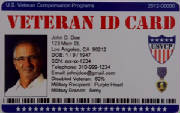|
|
|
|
|
|
Did You Know?
How To Appeal VA Denial Decision To begin your appeal,
write the VA a letter telling them you disagree with their decision. This letter is called your “Notice of Disagreement.”
If you are denied more than one claim for a benefit (for example, if you claimed compensation for three disabilities and denied
two of them), please tell the VA in your letter which claims you are appealing. Send your Notice of Disagreement
to the address at the top of VA letter. What
happens after VA receives your Notice of Disagreement? The VA will either grant your claim or send you a Statement of the Case. A Statement of the Case describes
the facts, laws, regulations, and reasons that they used to make their decision. The VA will also send you a VA Form 9, “Appeal
to Board of Veterans’ Appeals,” with the Statement of the Case. You must complete this VA Form 9 and return it
to the VA if you want to continue your appeal. How
long do I have to start my appeal? You have one year to appeal your decision. Your letter saying that you disagree with the
VA decision must be postmarked (or received by the VA) within one year from the date of the original VA letter
denying you the benefit. In most cases, you cannot appeal a decision after this one-year period has ended. What happens if I do not start my appeal on time? If you do not start your appeal
on time, the VA decision will become final. Once the decision is final, you cannot get the VA benefit denied
unless you either: ·
Show the VA that they
were clearly wrong to deny the benefit or · Send the VA new evidence that relates to the reason(s) the VA denied
your claim Can I get a hearing with the Board?
Yes. If you decide to appeal, the Board will give you a hearing if you want one. The VA Form 9 we will send you with a Statement
of the Case has complete information about the kinds of hearings the Board offers and convenient check boxes for requesting
a Board hearing. The board does not require you to have a hearing. It is your choice. Where
can I find out more about appealing to the Board? ·
You can find a “plain
language” booklet called “How Do I Appeal,” on the Internet at: http://www.bva.va.gov/How_Do_I_Appeal.asp. The booklet also may be requested by writing to: Mail Processing Section (014), Board of Veterans’ Appeals, 810 Vermont
Avenue, NW, Washington, DC 20420. ·
You can find the formal
rules for appealing to the Board in the Board’s Rules of Practice at title 38, Code of Federal Regulations, Part 20.
You can find the complete Code of Federal Regulations on the Internet at: http://www.gpoaccess.gov/cfr/index.html. A printed copy of the Code of Federal Regulations may be Available at your local library. Definition of "Veteran"
Expanded The three first bills passed by the House of Representatives Wednesday, February 17, 2016—all with unanimous votes—will help active duty members, veterans, and their families to have access to services and benefits, and will also ensure their employment rights are protected. House Bill 1213, sponsored by Rep. Tina Orwall, D-Des Moines, modifies the definitions of “veteran” and “family” for the Veterans’ Assistance Fund, which provides funding for services and relief for indigent veterans and their families through the County Veterans Assistance Programs. The bill corrects some issues around the complexities of the definition of “veteran” and “family” for the Veterans’ Assistance Fund eligibility. Currently, veterans have to look to three different definitions. This measure streamlines the definitions to be more consistent with those in federal law. By modifying these definitions, the County Veterans Assistance Programs can actually access a wider array of services and do it more quickly. It is another great way to help the men and women who serve our country, and their families,” said Orwall. Tuition Free Any child born or adopted before, during or after the period of time his or her parent were officially declared a POW or MIA after January 1, 1960, may apply for free undergraduate college tuition.
Wall of Honor A Place for Mom has created the “Wall of Honor” to highlight U.S. veterans and pay tribute to the men and women who have played a critical role in our nation’s history. This tribute offers family and friends the opportunity to celebrate a loved one that has served in the U.S. military by sharing a treasured photo along with military and life highlights, and personal messages. |
|
|
|
|
|
|

